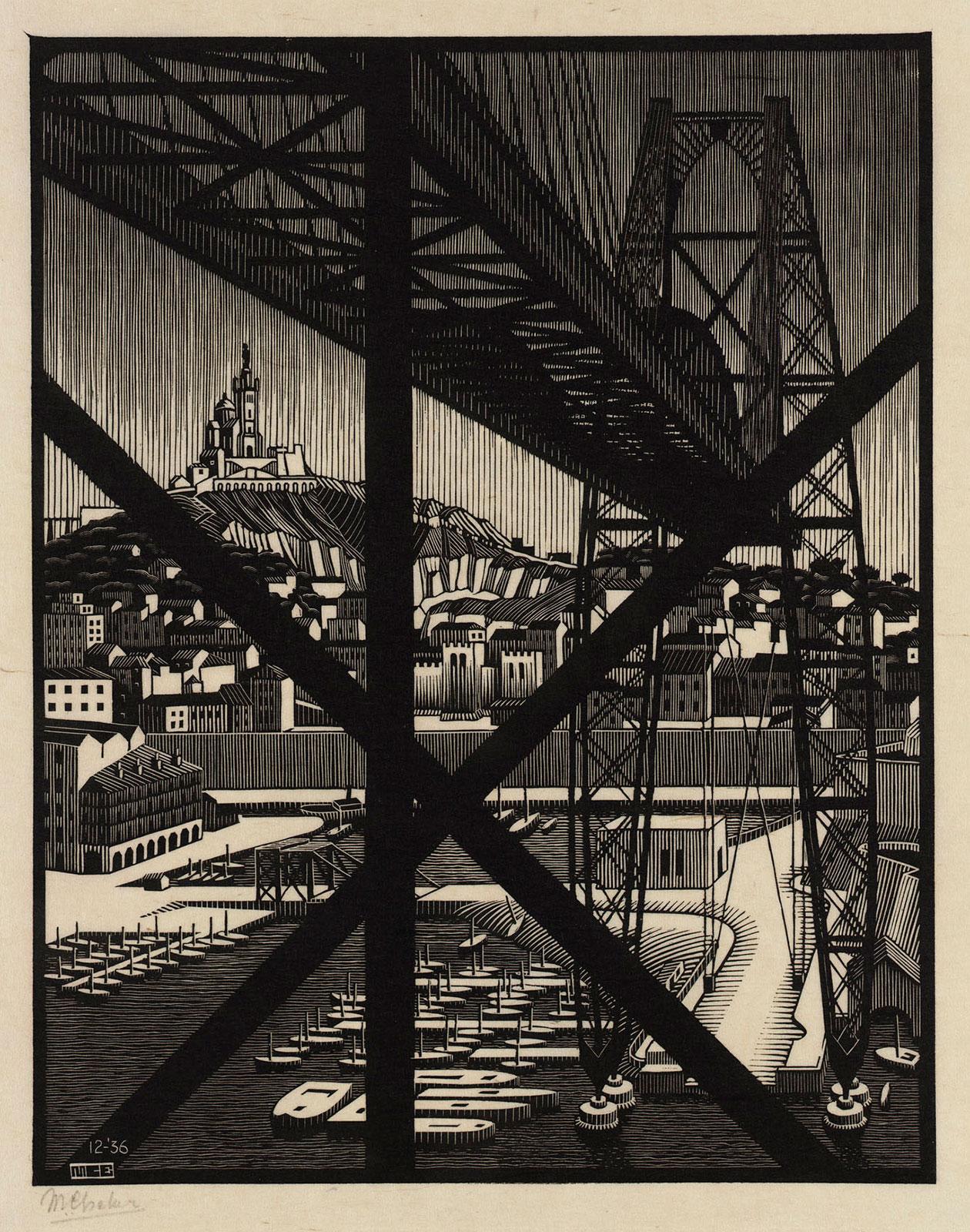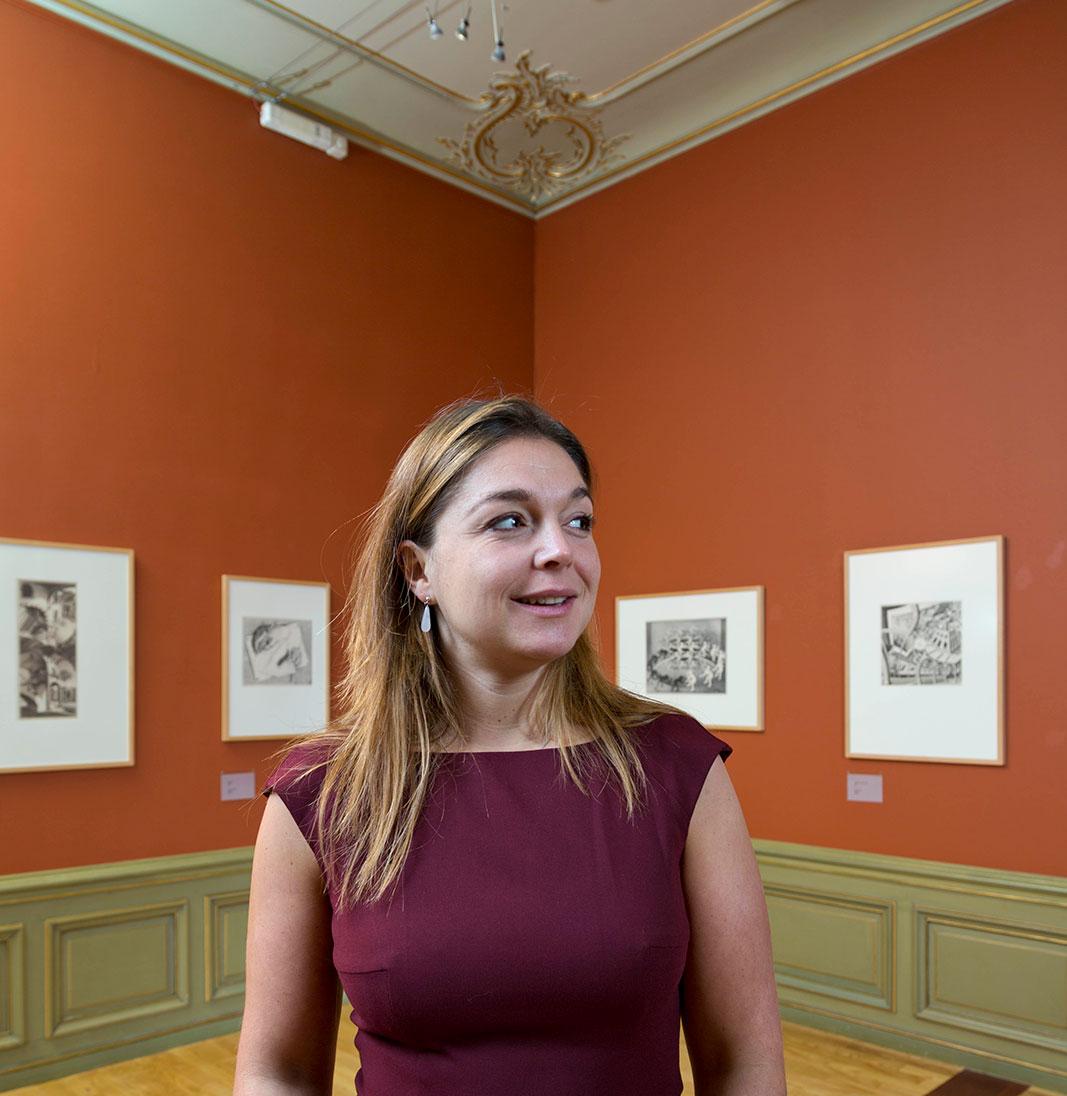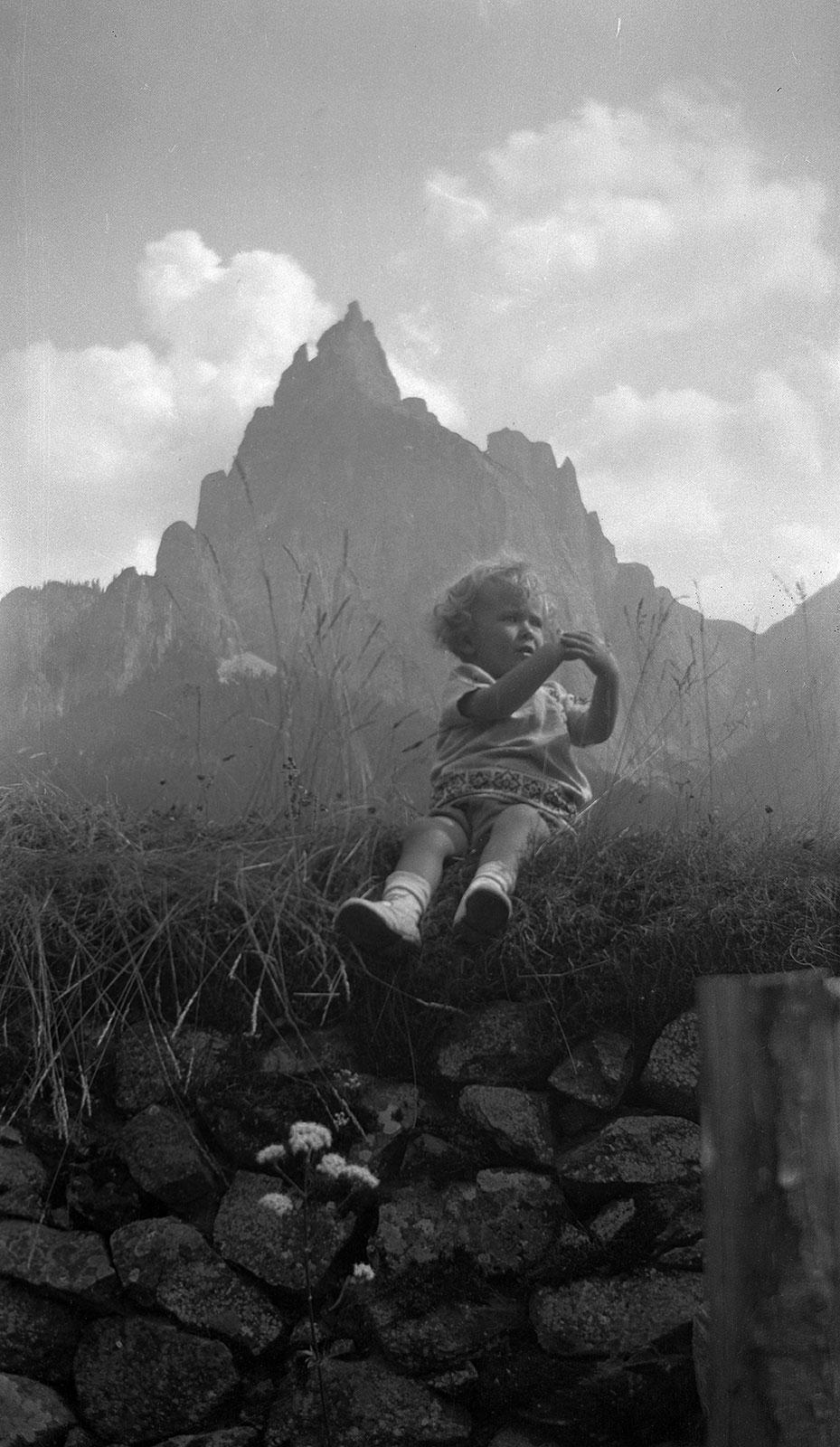

Escher was first and foremost a printmaker. That said, he also produced a variety of designs for art in public spaces. For example, he designed some magnificent tiled columns with regular tessellations for two schools. The columns were recently restored and relocated, and now for the first time the original tiles can be seen in Escher in The Palace!
Escher designed columns for two schools: Maris College in The Hague in 1959 (back then still called the Johanna Westermanschool and situated on J.W. Frisolaan) and Baarnsch Lyceum in Baarn a decade later. For the Girls' school in The Hague Escher designed three columns, whereas for Baarnsch Lyceum he designed two. All in black and white and all comprising tessellated tiles. How were these columns created? And more importantly: where are they now?
'Meisjesschool', The Hague
Let’s start in The Hague. When a start was made on the construction work for the new 'Meisjesschool' (Girls' School) on J.W. Frisolaan in 1958, the school's then principal approached Escher. In consultation (also with the architect Rutger Bleeker), it was decided that three columns in the assembly hall would be given tessellations. They had to be round columns, covered in tiles featuring seamless, merging patterns. An ambitious project.
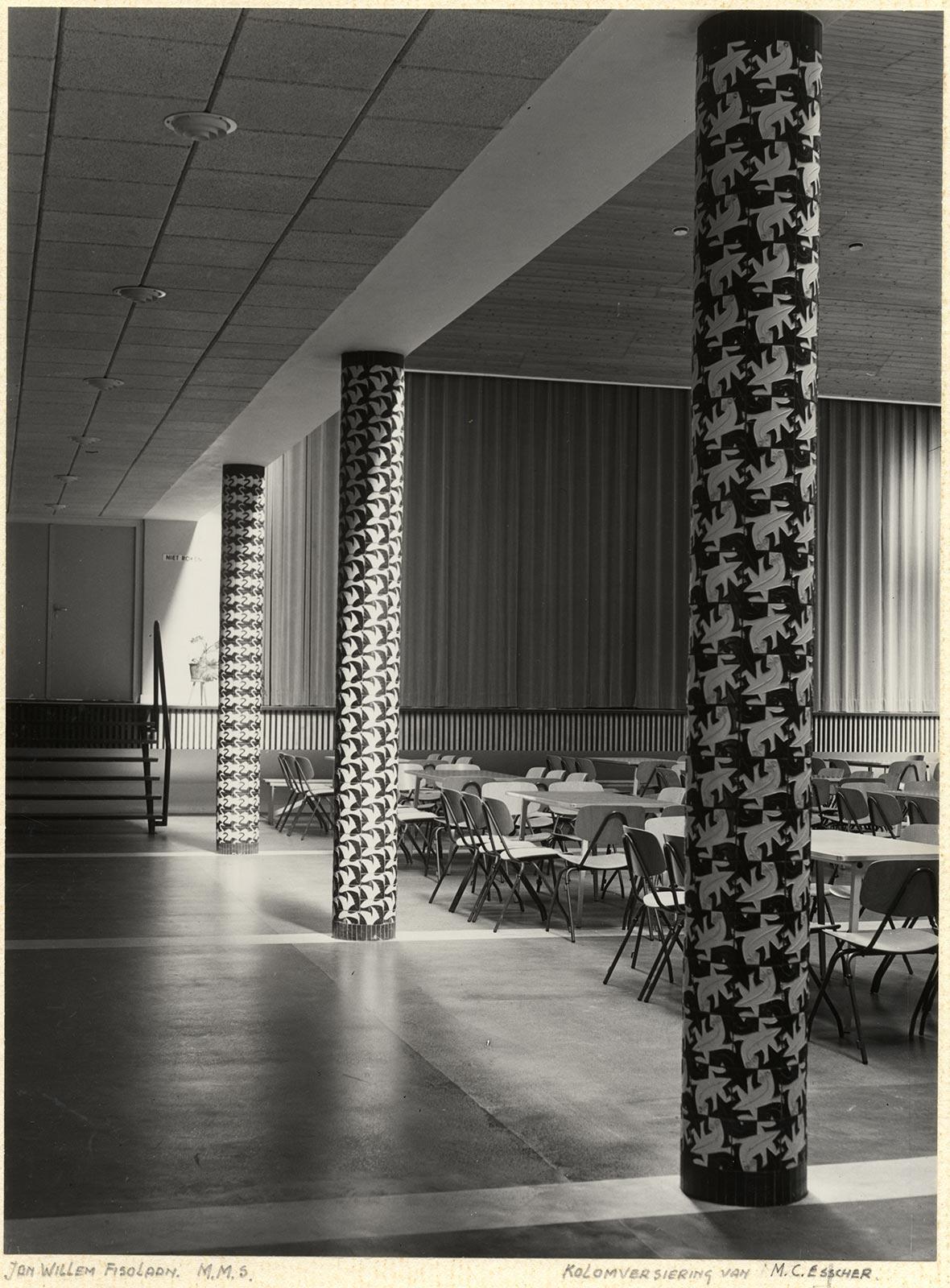
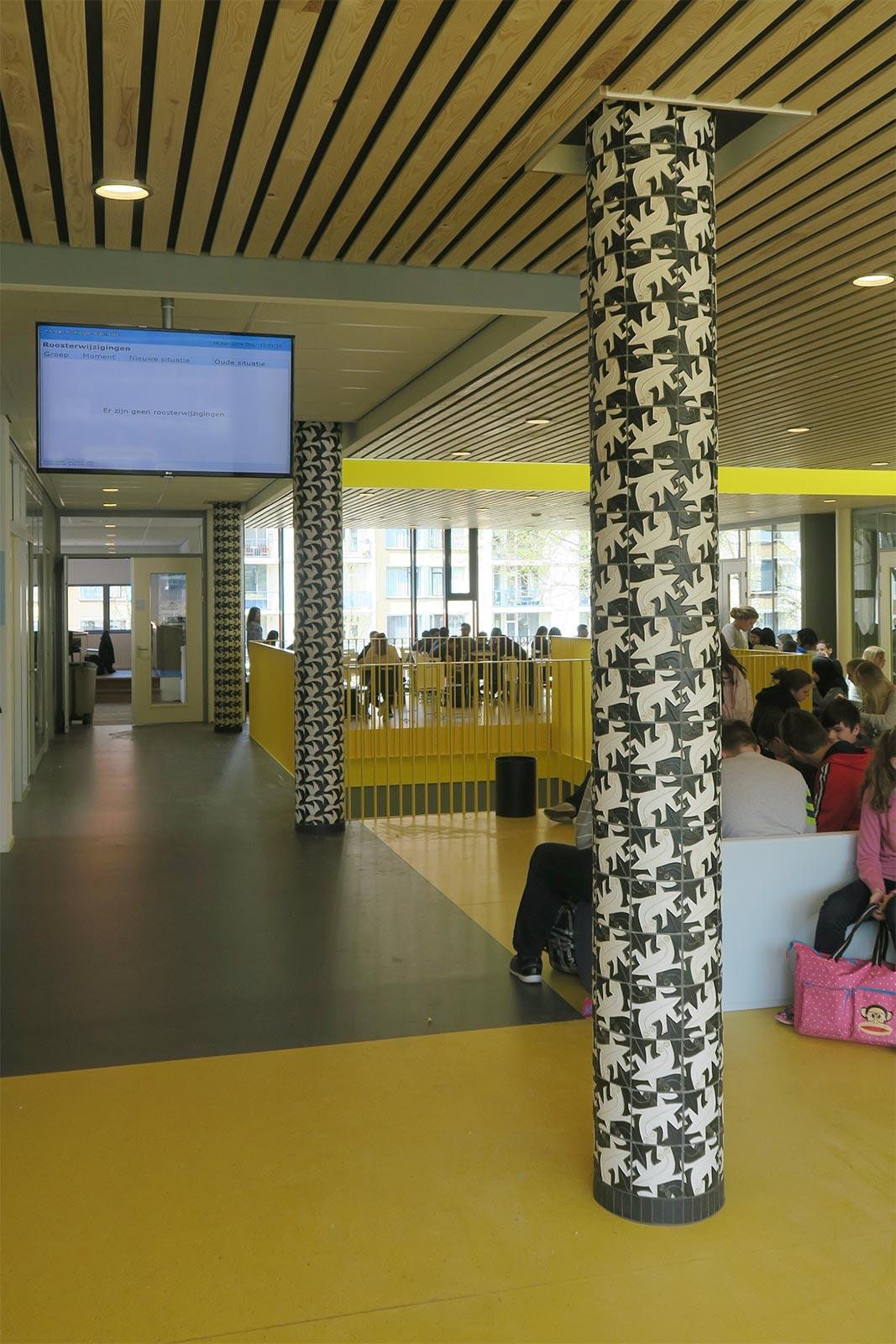
Escher produced the design and De Porceleyne Fles were tasked with producing the tiles. Costs: 600 guilders per column. In June 1959 test tiles were fired and shortly thereafter they went ahead with the implementation of the project. Perhaps a little too quickly. Escher was on holiday between mid June and mid August that year, and when he returned the tiles had already been fitted. The upshot of this was an unhappy artist.
According to Escher, the tiles hadn't been fitted in line with his design, and the tiles' dimensions and finish weren't good either. Escher said the tessellations weren't clear enough, for instance. Everything had to be done again. Costs: 500 guilders per column.
It's probably unsurprising that it didn't go right first time. The tiles that Escher had designed were also bona fide works of art. In order to cover the round columns, the tiles had to be fired in a slightly convex shape, with a hollow interior, to make them easier to fit. The pattern had to have raised edges so that the glaze stayed in there perfectly. Each tile had to correspond exactly to the drawing and be fitted precisely to the millimetre, or else the regularity of the tessellation would be lost. No mean feat.
In the end, it was a success. The 'Meisjesschool' opened in 1959 with three magnificent columns in the assembly hall.
Baarnsch Lyceum
A little less than a decade later Escher was approached once again for a similar project. This time in his home town: Baarn. The school attended by Escher's own sons, Baarnsch Lyceum, was to relocate. The school were keen to commission a work of art by Escher for the new site. The architect for this new-build project was Rutger Bleeker. None other than the same architect that was involved in The Hague a decade earlier. And so it seemed logical to create columns here too. Escher produced the design and again De Porceleyne Fles were asked to produce the tiles. The invoice for the assignment is still extant, and it’s striking that the company this time asks for 2,850 guilders for the entire project. Considerably more than in The Hague. Escher asked for a fee of 2,000 guilders per column.
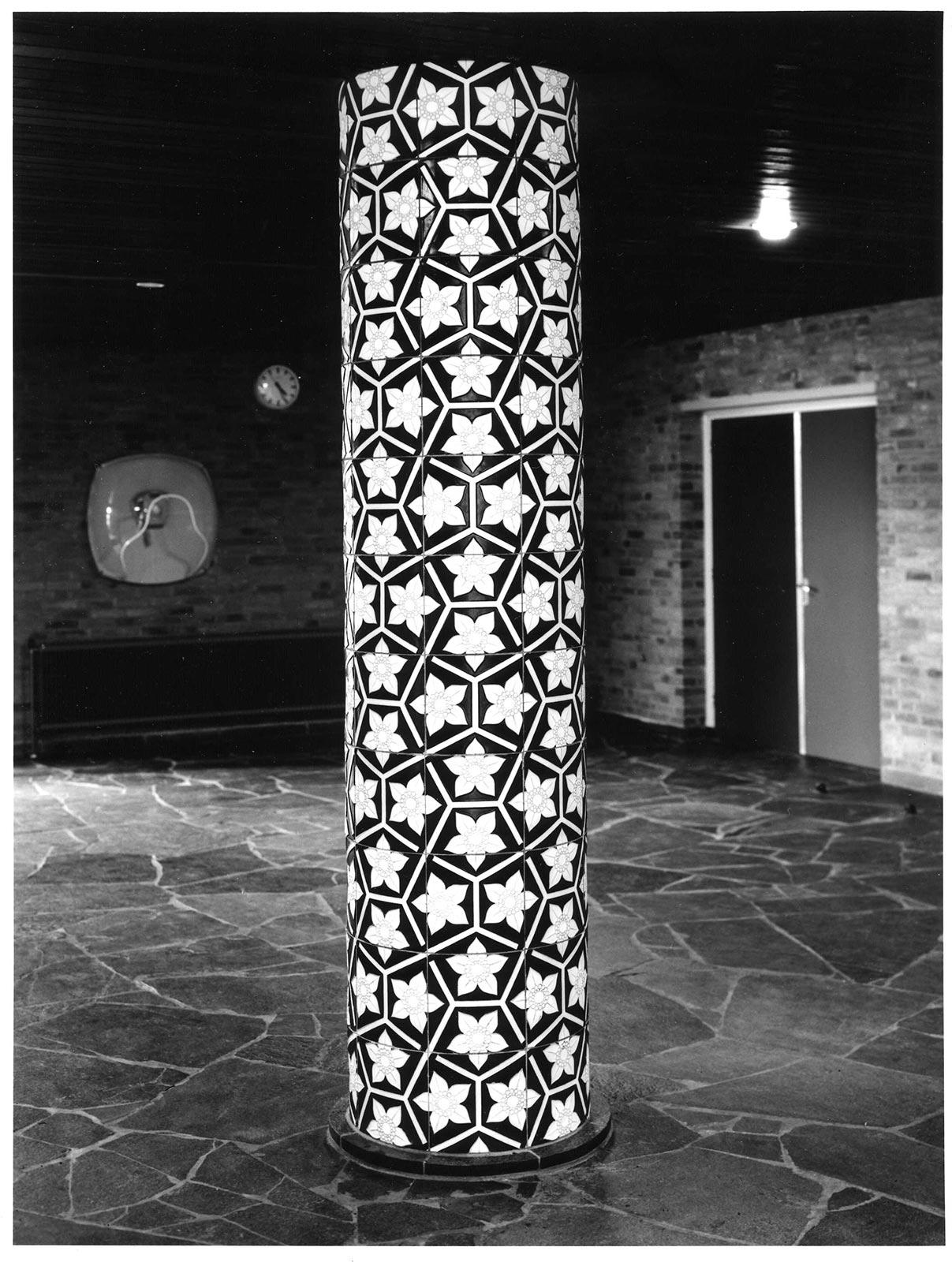
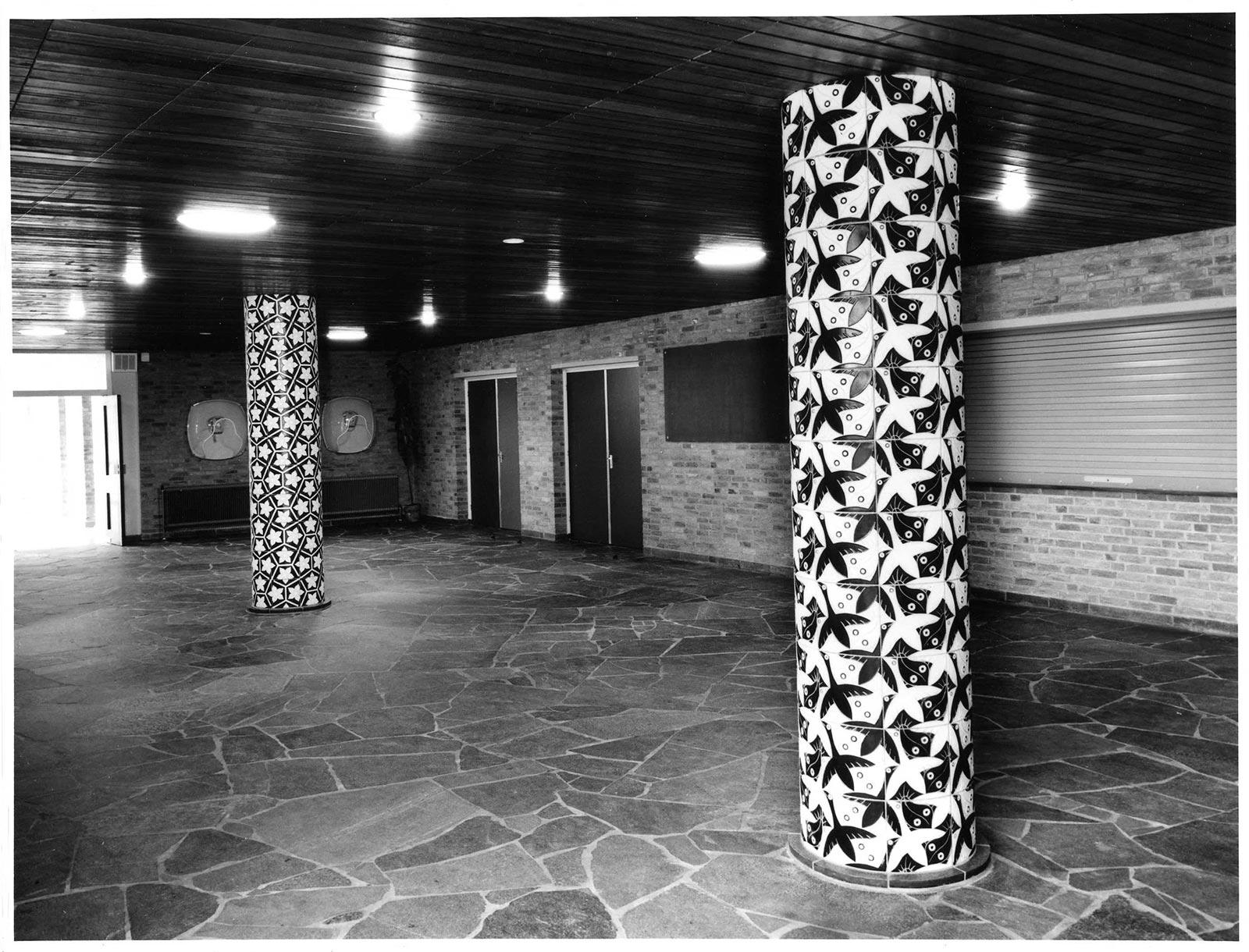
This time Escher was in attendance from the moment the fitting began. Nothing was allowed to go wrong! He got on the tile-fitters nerves, but the result was spectacular. Escher's diary tells us that he bought cigars for the tile-fitters as a reward.
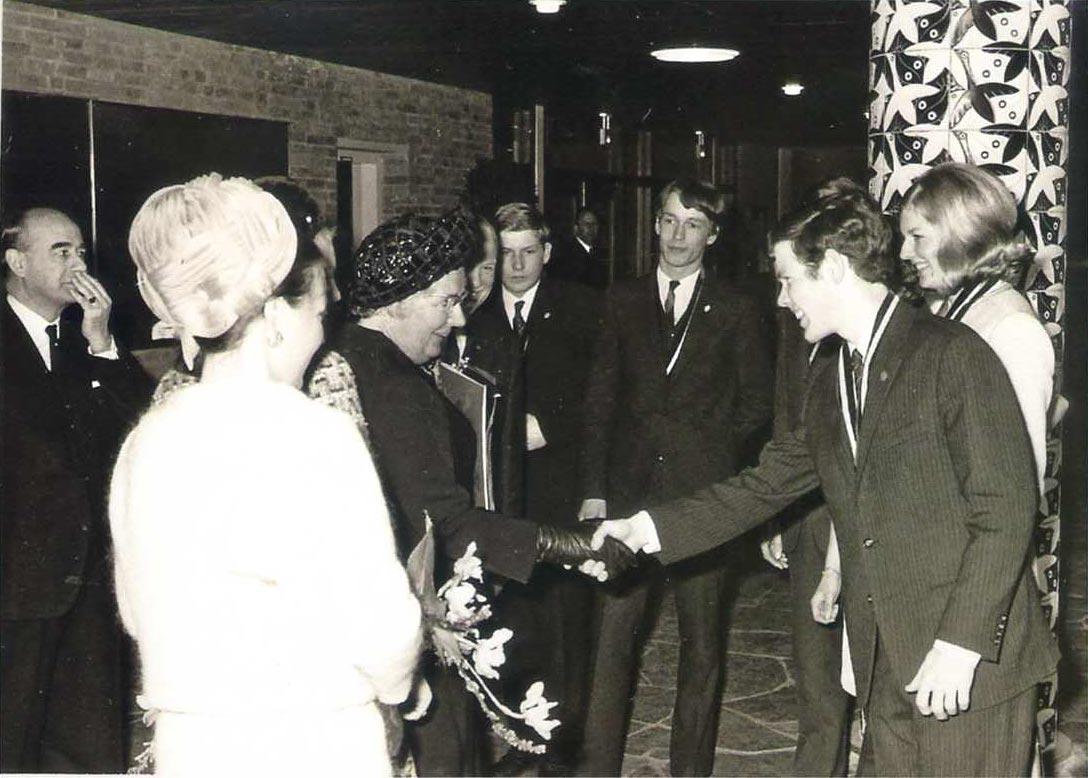
So you might be thinking: all’s well that ends well! But no, that’s not the end of the story. Both schools were relocated and the old schools demolished in 2008 and 2013. This time Baarnsch Lyceum was first, which gave Maris College a chance to watch and learn the art of dismantling the columns. Because that’s what it was: an art.
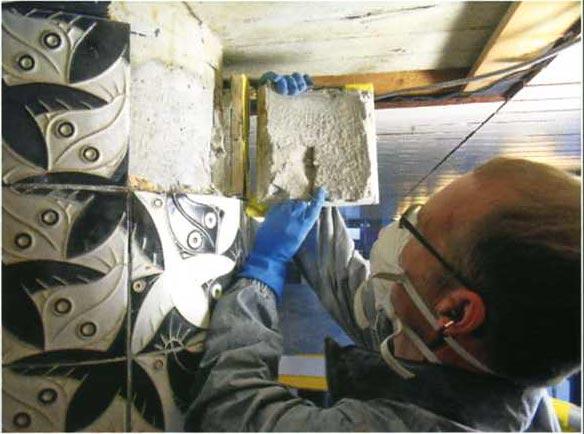
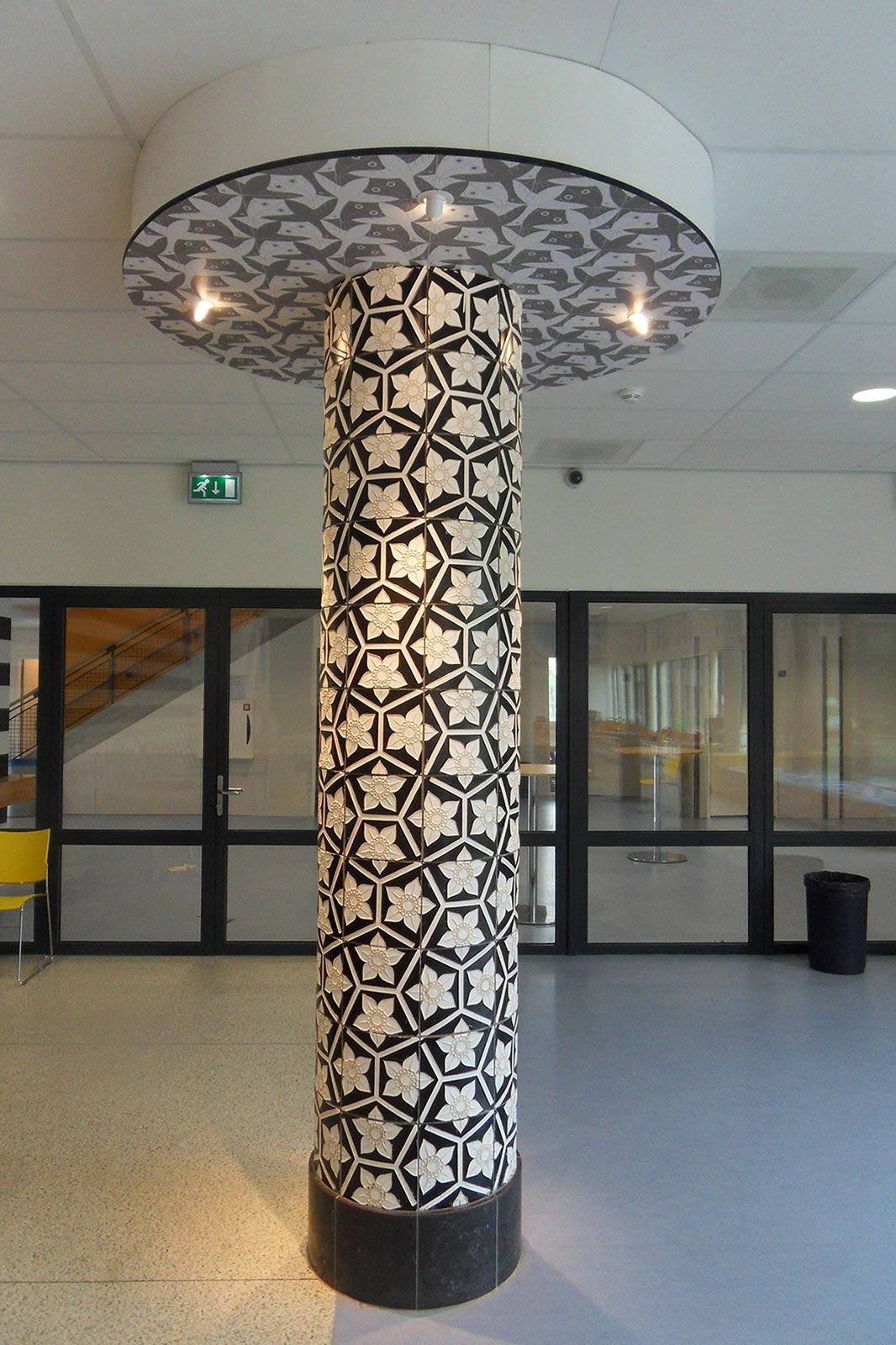
Relocating the columns quite possibly took more manpower than creating them roughly 50 years earlier. After all, how do you go about removing tiles as fine as these ones? And what about refitting them? Just you try finding a company specializing in tiling round columns with tiles that are irreplaceable! In short, it was a challenge.
Eventually a suitable party was found in 2010 and a start was made on dismantling the columns. A grinder was used to produce deep grooves where the tiles joined. Wet grinding didn’t work due to the risk of electrocution, so they had to do it dry. Dust everywhere. Well and truly everywhere. And prising. Weighing. And finding out that the tiles have been anchored. In order to get the tiles off, this anchor needed to be ground off carefully or tapped through without damaging the tiles. A right carry-on. It took two days to remove 176 tiles. And during this process 'only' 9 tiles were broken.
At the new site the craftsmen restored the columns to their full glory in three days, with the aid of fitting wire and a laser.
Just two years later Maris College went ahead with a relocation. They were relieved that they didn’t have to come up with a solution from scratch. And so things worked out very well when it came to moving the columns to the new site on Landrestraat, where they can still be admired today.
Map is loading...
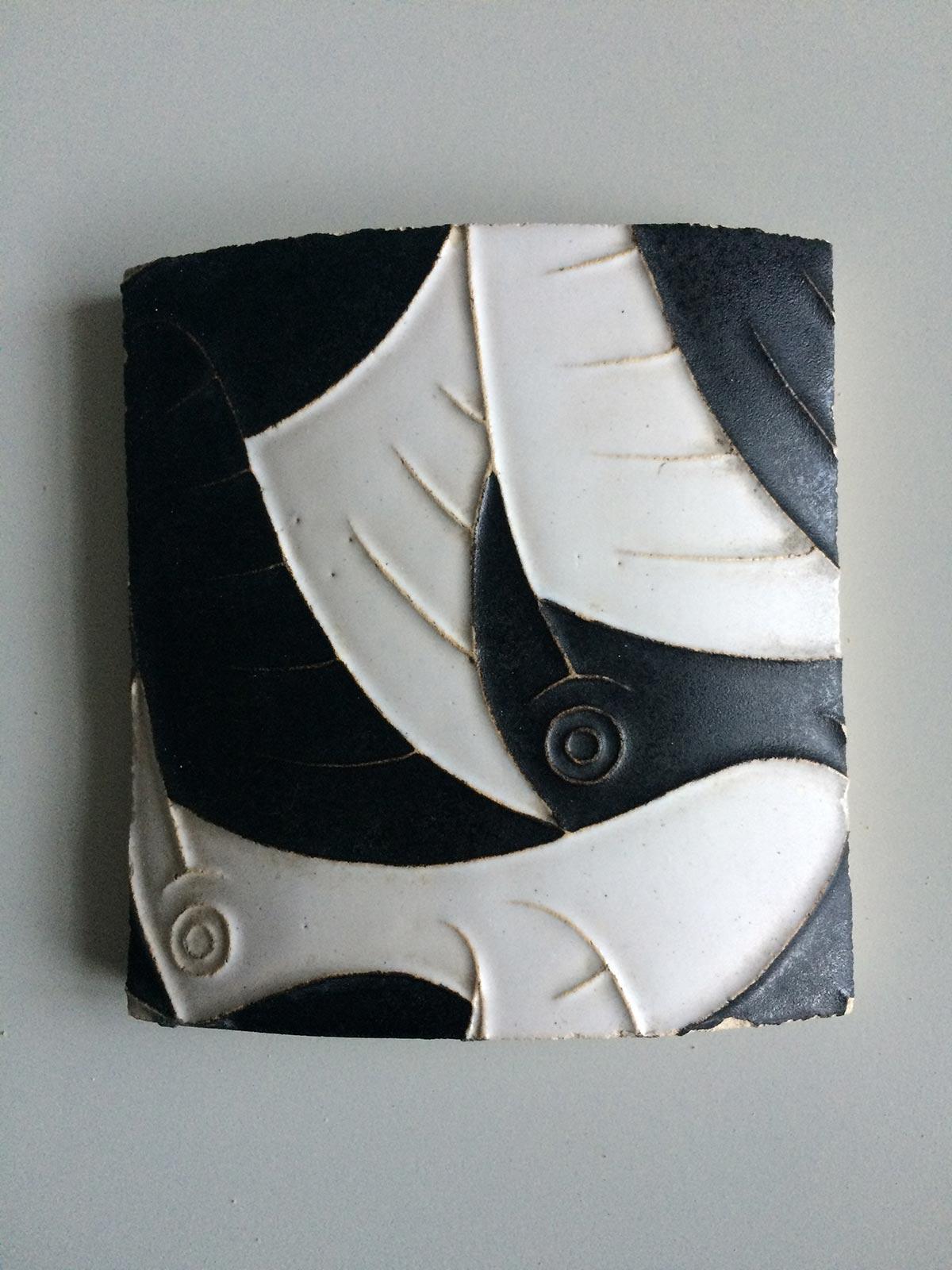
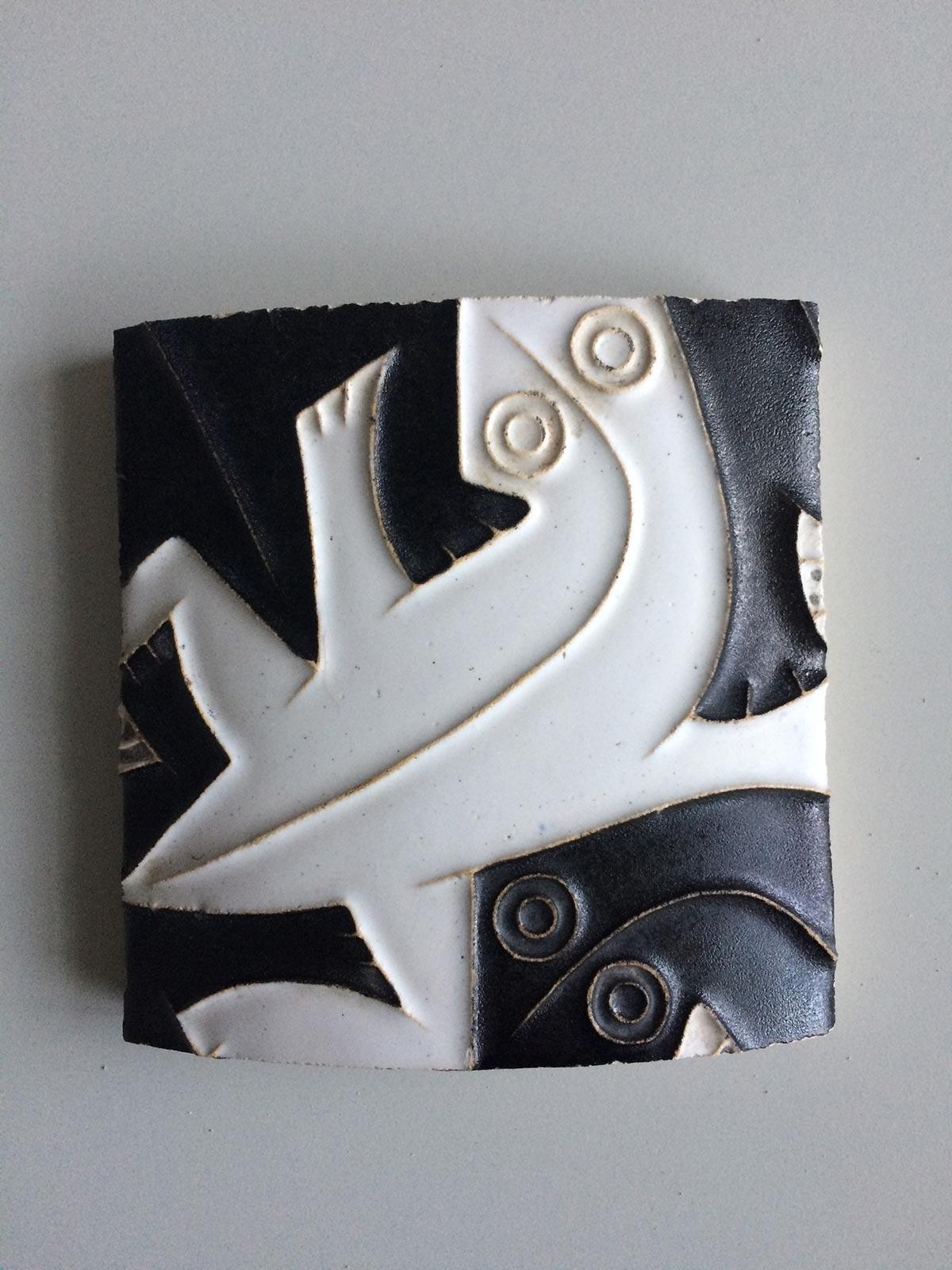
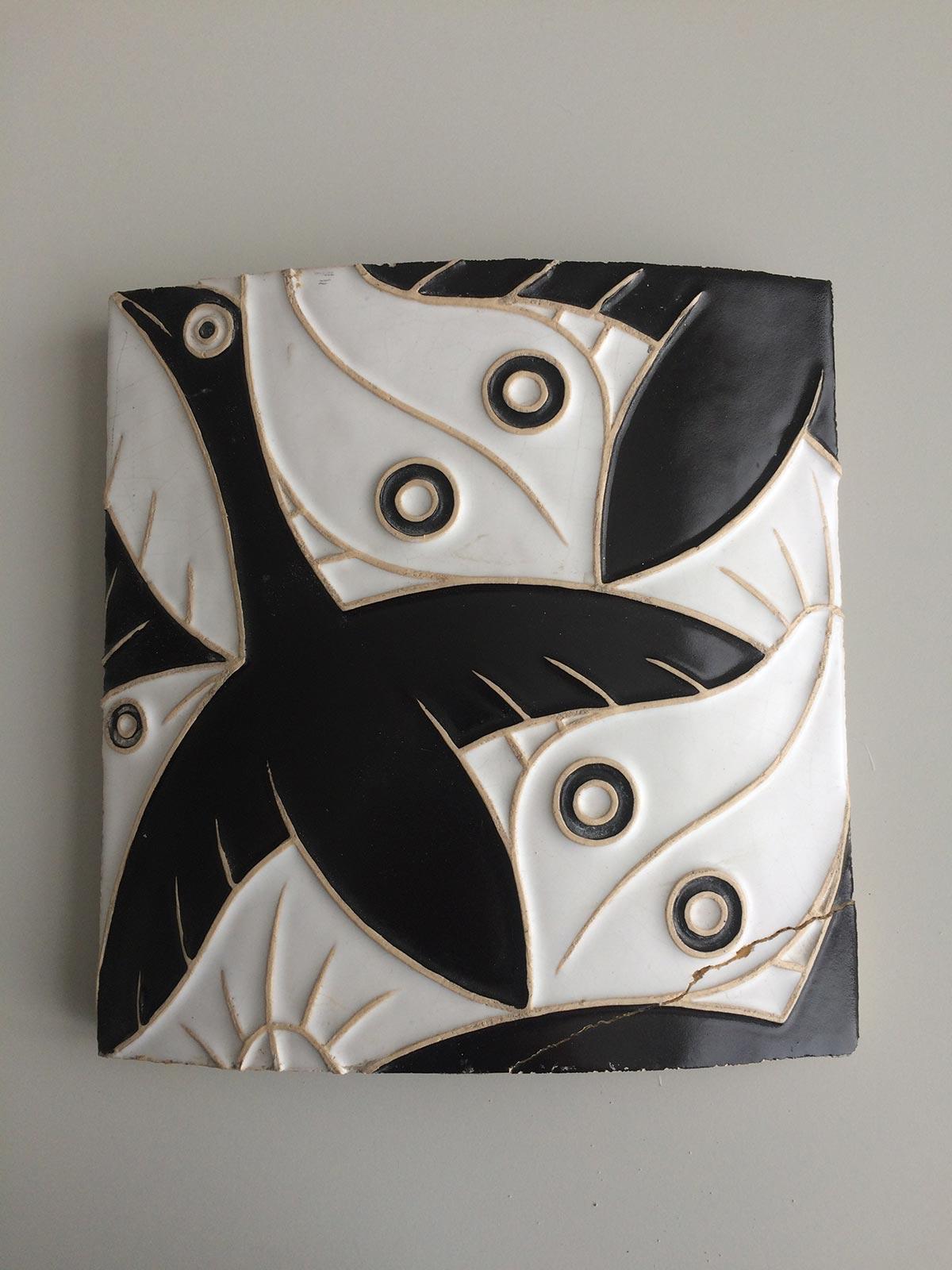
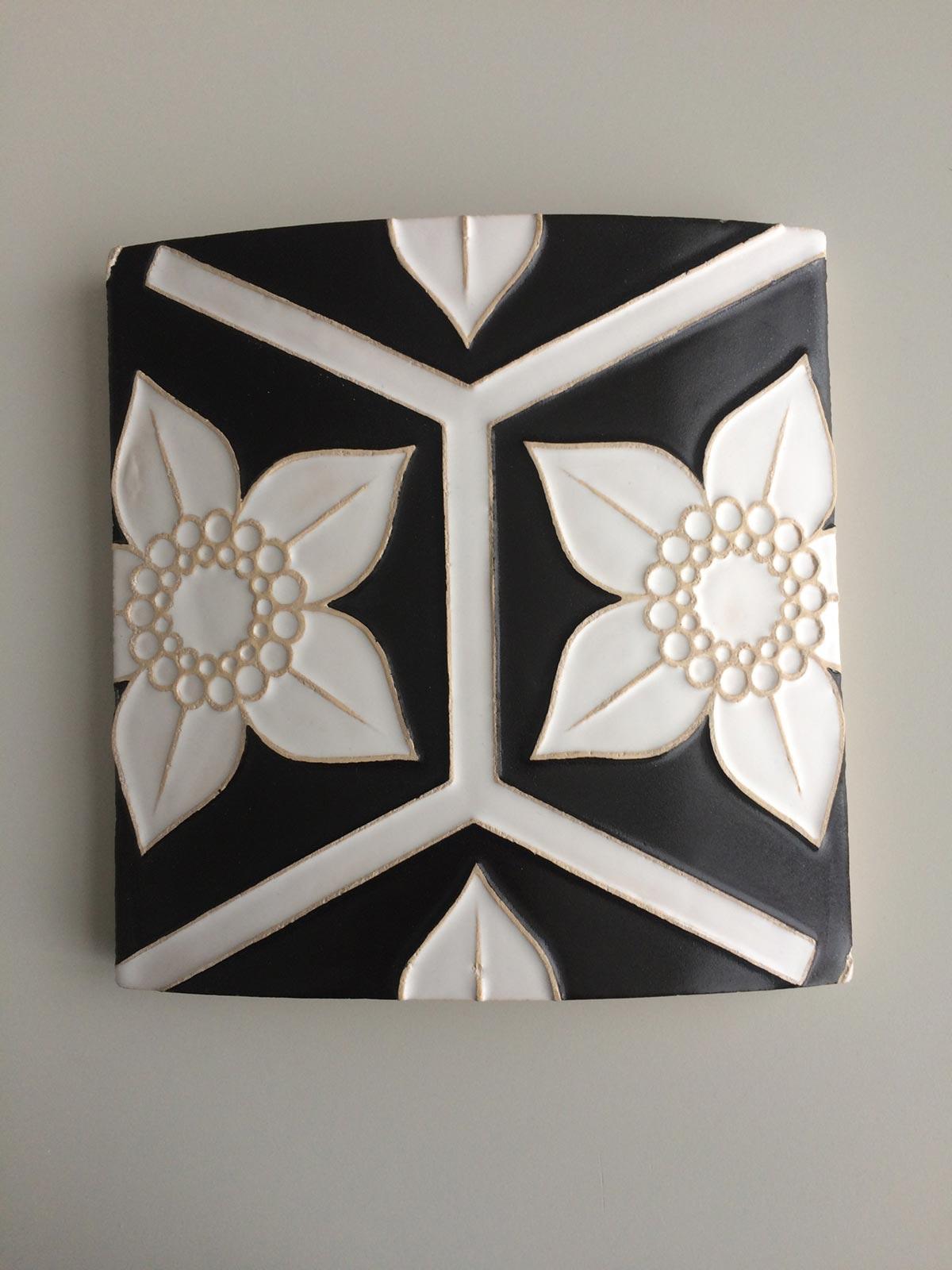
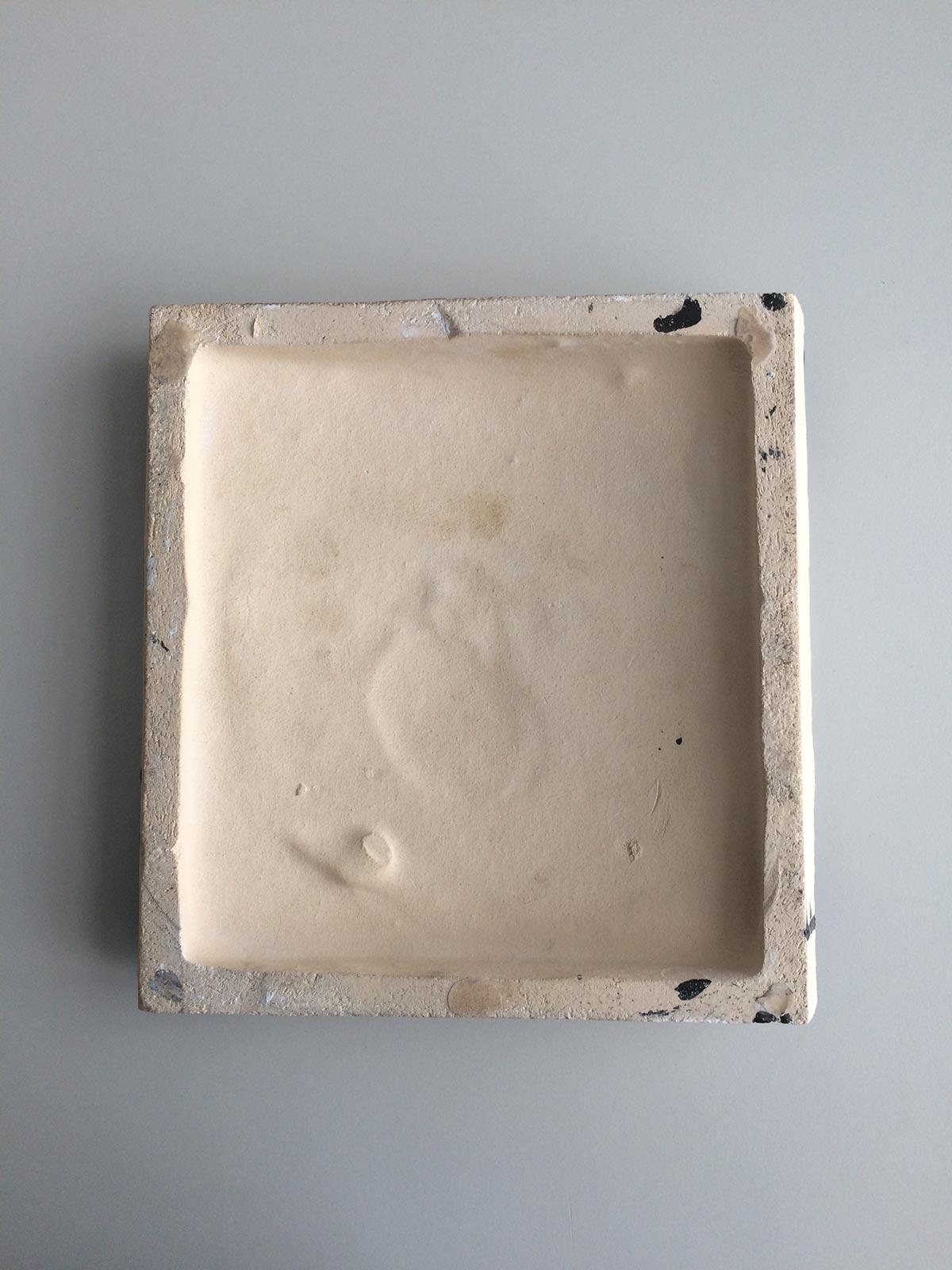
More stories about Escher

